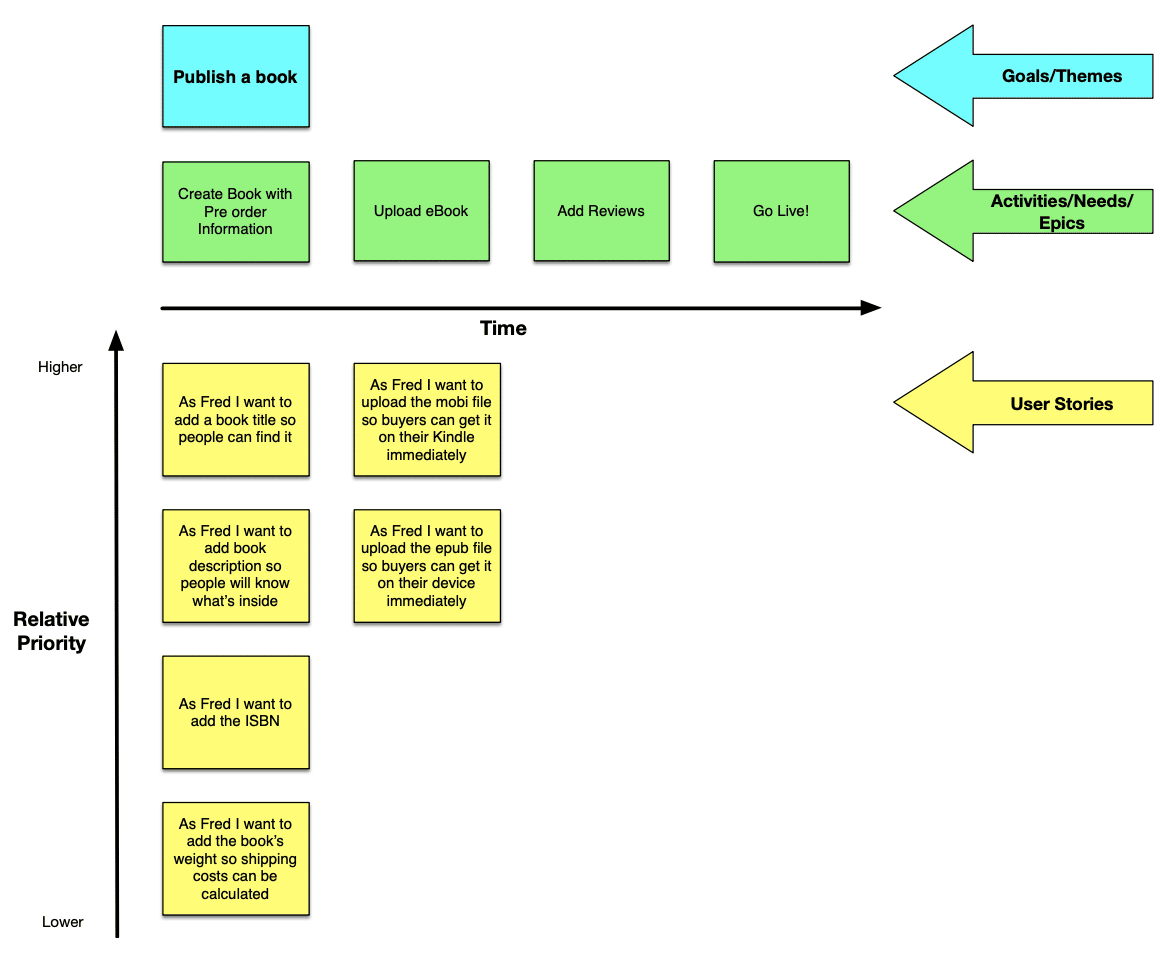A Story Map is a way to help visualize the flow or story of a product. Across the top or horizontal axis of the map we place the major steps (often features) in the user’s workflow. Underneath each step or feature are the individual stories that would build out the portion of the product.
Story Maps were invented because their creator Jeff Patton was frustrated with “flat” Product Backlogs that lost track of the Product Vision. People use Story Maps as a stepping stone from Vision to User Stories, they’re also used to help sort out and recover from a messy Large Product Backlog.
Learning Story Mapping Through Exercises

Resource Links:
- A Beginner’s Guide to Story Mapping
- A Guide to User Story Mapping: Templates and Examples (How to Map User Stories)
- How to create a User Story Map
- The New User Story Backlog is a Map
- Sketchnotes: Part I and Part II
- Story Map Concept
- Story Mapping, Visual Way of Building Product Backlog
- User Story Mapping in Practice (Video)
- User Story Mapping (by Jeff Patton) — Bullet Summary
- User Story Mapping for Beginners
- Working with User Story Mapping
STORY MAPPING TOOLS:
STORY MAPPING BOOKS:
See Also:
Impact Mapping
Roadmaps and Strategy
*Thank you for visiting the World's Largest Opinionated Agile Reference Library. This content is created and the links are curated through the lens of Agile Pain Relief Consulting's view of what is effective in the practice of Scrum and Agile. We don't accept submissions and emails to that effect are marked as spam. Book listings may use affiliate links that could result in a small commission received by us if you purchase, but they do not affect the price at all. From experience, this won't amount to anything more than a cup of coffee in a year.« Back to Glossary Index